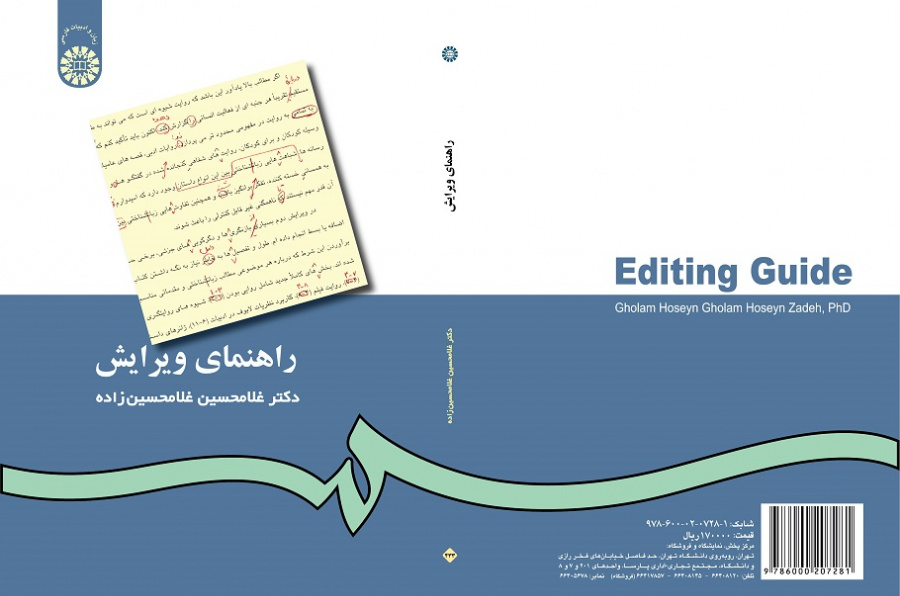

Editing Guide
Despite the invention of modern devices, undoubtedly, writing still appears to be an efficient tool in different scientific and cultural fields. Scholars and intellectuals have made great efforts to reveal their knowledge and inner and mental inspirations as perfectly as possible to be judged. But, for one reason or another, the readers may find it difficult to get the real intended meaning of others’ findings or even misunderstand the whole subject due to some failures made in different areas. This may result from the transition, which is a very delicate task and just a small
carelessness suffices to make the understanding impossible. This is where the dexterity of the author can be truly recognized. However, even the most skillful authors are not free from faults; for instance, due to focus on just one aspect, they may fail to consider all the other aspects of a task or writing. It is this point that the editor's role is made known, though the writer and interpreter are expected to be fully aware of rules and regulations in writing and editing.
This book is a comprehensive one to serve this goal. It tries to discuss text edition in a scientific way through academic lessons. It attempts to deal more with literary and technical aspects of edition and explain issues like the generalities; Persian handwriting; writing foreign words in Persian; punctuation; abbreviating and edition marks; making glossary and footnotes; writing figures and formulas; making charts,
tables, pictures; preparing list of indexes, scales, page setting, sound writing and dictation. Pictures, tables and charts are also included in the book.
Compiled as the main textbook for the course “Writing and Editing” and also useful for writers, translators, editors, and publishers, this book is a comprehensive one which tries to discuss text edition in a scientific way through academic lessons.





